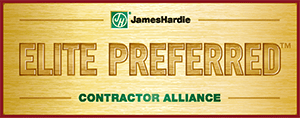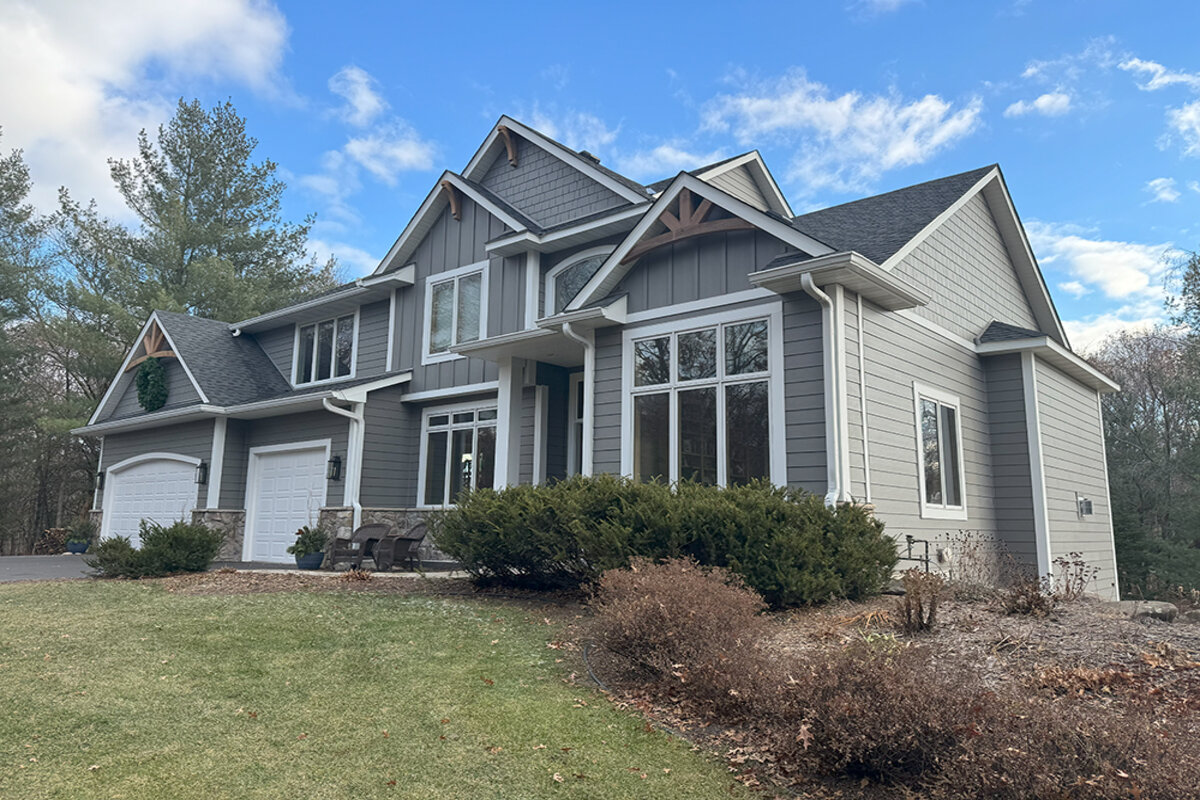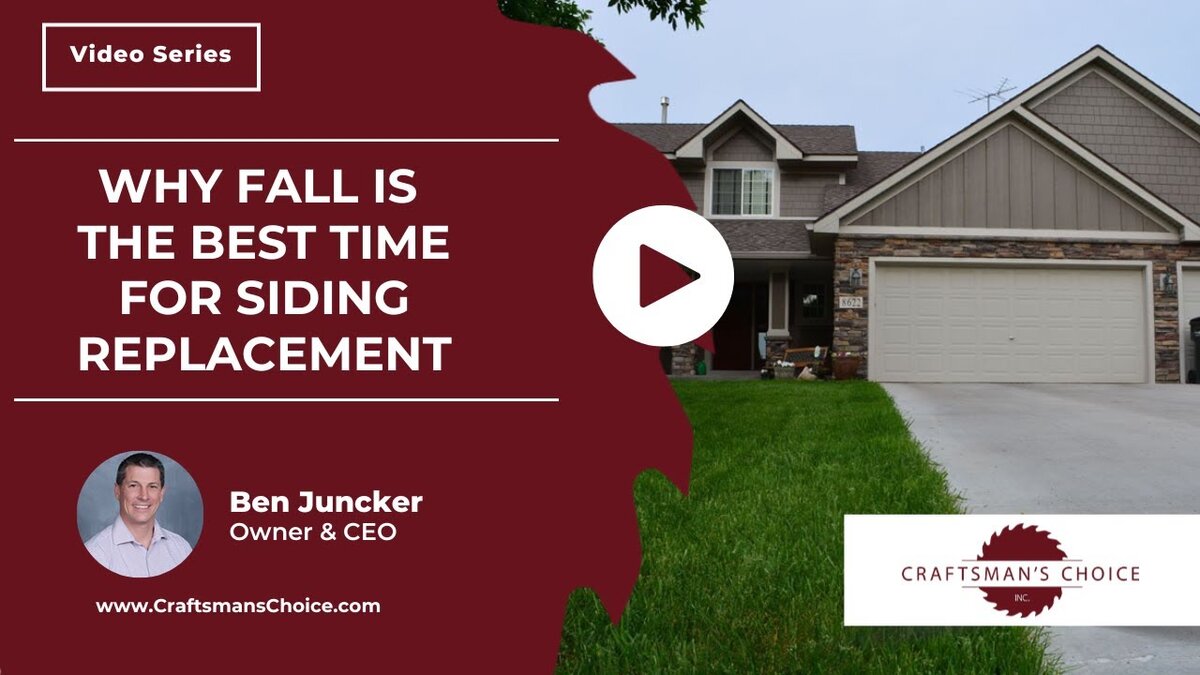Homeowners often think siding is maintenance-free, but if you live in Minnesota, especially in shaded or north-facing areas, you may eventually spot patches of green or dark streaks creeping along your siding. That’s algae and moss—two common growths that love damp, shady spots. While it might be tempting to blast it off with high-pressure water, there’s a right way and a wrong way to handle it. At Craftsman’s Choice, we’ve helped countless homeowners safely remove algae and moss from siding without damaging it, and in this guide, we’ll walk you through exactly how we recommend doing it.
Why Algae and Moss Show Up on Siding
In Minnesota, algae and moss don’t usually grow on siding all over the house. We mostly see it forming on the north side or in areas that don’t get much direct sunlight. Without that sunlight, moisture from rain, snow, or morning dew doesn’t dry out quickly, creating the perfect environment for organic growth.
These growths aren’t just ugly—they can slowly eat away at your siding if not addressed. That’s why knowing how to remove algae and moss from siding properly is key to maintaining both your home’s curb appeal and long-term performance.
The Safest Way to Clean Your Siding
We always stress that siding is durable, but it’s not indestructible. Cleaning methods that are too aggressive can do more harm than good. That’s why our team always recommends this two-step approach.
Step 1: Use Light Pressure Washing
The safest, most effective method to start with is a light pressure wash. We’re not talking about turning the pressure washer to full blast—that can gouge, dent, or even crack your siding. Instead, you want to use just enough pressure to rinse away surface buildup.
Here’s what we recommend:
- Start with a low-pressure setting on your pressure washer.
- Keep the nozzle at least 12–18 inches away from the surface.
- Spray at a downward angle to avoid forcing water behind the panels.
- Move in a steady, horizontal motion.
Most of the time, this light wash is enough to clear off algae and moss, especially if caught early.
Step 2: Apply a Non-Abrasive Soap (If Needed)
If the pressure washing alone isn’t getting the job done, you can follow up with a gentle, non-abrasive soap solution. This can loosen stubborn spots before you rinse them off with low pressure.
To do this safely:
- Choose a siding-safe, non-abrasive cleaning solution.
- Apply it using a garden sprayer or soft-bristled brush.
- Let it sit for a few minutes—don’t let it dry on the surface.
- Gently rinse it off with the pressure washer on a low setting.
Just like with pressure washing, the goal is to be thorough but gentle. Avoid any scouring pads or wire brushes that could scratch or dig into the siding surface.
What to Avoid When Cleaning Siding
Knowing how to remove algae and moss from siding without damaging it also means knowing what not to do. Over the years, we’ve seen some cleaning mistakes that ended up doing more harm than good.
Avoid these common pitfalls:
- High-pressure spray at close range: This can damage the siding material or force water behind it.
- Harsh chemicals or bleach: These can discolor siding and damage landscaping.
- Scraping with hard tools: These can leave permanent marks or gouges.
- Letting moisture sit: Always rinse and let siding dry fully after cleaning.
Our recommendation is simple: when in doubt, go lighter. It’s better to clean a little slower than to accidentally damage your siding.
How Often Should You Clean Algae and Moss?
This really depends on how much shade your home gets. In sunny spots, you may never see any growth. But on the north side or under trees, you might need to clean once every year or two. Keep an eye out for dark patches, green streaks, or fuzzy buildup. These are signs it’s time to break out the pressure washer and soap solution.
We also recommend keeping shrubs and trees trimmed back and checking your gutters regularly. Good airflow and drainage help siding stay dry and moss-free.
Why Choose Craftsman’s Choice for Your Siding Cleaning
While it’s possible to clean siding on your own, many homeowners prefer to leave it to the professionals—especially when the goal is to remove algae and moss from siding without causing damage. That’s where we come in.
At Craftsman’s Choice, we understand exactly how much pressure to use, what cleaning solutions are safe, and how to approach each home based on its specific conditions. We know Minnesota homes, and we know how to clean them without taking risks. Our team uses proven methods to safely eliminate organic buildup while protecting the integrity and appearance of your siding.
Instead of guessing and hoping you don’t make a costly mistake, let us handle it for you. You’ll get a clean, refreshed home exterior—and peace of mind knowing the job was done right.
In Summary
Removing algae and moss from siding without damaging it comes down to using the right tools, the right pressure, and the right approach. Light pressure washing and a non-abrasive soap are often all it takes, but it’s important to know how to use them correctly. Avoiding high-pressure blasts and harsh chemicals will help keep your siding intact while still getting the job done.
If you’re not confident in doing it yourself or just want the best results without the risk, Craftsman’s Choice is here to help. We’ve worked with homeowners across Minnesota and know how to treat siding the right way.
Contact us today to schedule your siding cleaning or inspection—we’d be happy to take care of it for you.



















